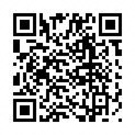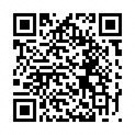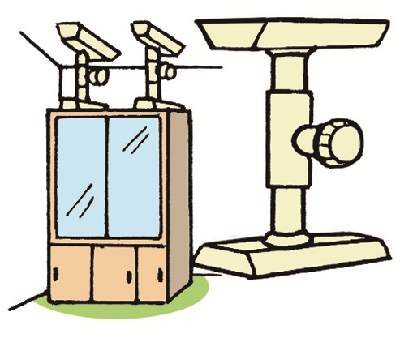Main content starts here.
Preparing for Disasters
Last Updated October 2, 2023
Multilingual disaster prevention leaflet
This is a pocket-sized multilingual disaster prevention leaflet that can be carried.
※Print on both sides (long side binding), cut out along the outer frame and use.
・Responses in the event of an earthquake, evacuation methods, and daily preparation
English, Hangul and Chinese version (PDF: 1,610KB)
Spanish, Portuguese and Tagalog version (PDF: 2,074KB)
Vietnamese, Thai and Indonesian versions (PDF: 2,213KB)
How to collect information
Please take a look at the website.
I write information on the time of a disaster and what to pay attention to on a daily basis.
Yokohama City Homepage Disaster Prevention and Disaster Page
Japan Meteorological Agency Multilingual Page (outside site)
Please use the app (Safety tips).

You will receive an e-mail.
"Yokohama City Disaster Prevention Information E-mail"
We send disaster information (earthquake, tsunami, heavy rain, etc.) from Yokohama.
If you wish to use it, please send an email to the following address.
After that, you will receive an email to register.
Japanese
Email address: bousai-yokohama@cousmail-entry.cous.jp

English
Email address: bousai-yokohama-en@cousmail-entry.cous.jp

You will receive an emergency bulletin email (area mail).
We send disaster information (earthquake, tsunami, heavy rain, etc.) to mobile phones and smartphones in Yokohama.
You don't need to register.
X (former Twitter)
Yokohama City will inform you of disaster information (earthquake, tsunami, heavy rain, etc.).
You can register your own safety. You can also search for a person.
Google Person Finder (when looking for a person, registering your own safety) (external site)
House safety measures
- When a large earthquake occurs, furniture may fall down or objects are scattered. Fix furniture and devise arrangement.
- Examples of furniture fall prevention equipment include L-shaped brackets, adhesive mats, and pull sticks.
- Put heavy objects under shelves, and do not place them in high places.

Stick rod
Preparation of stockpiles and emergency listings
- Immediately after a disaster occurs, it becomes difficult to purchase food and daily necessities. Consider the family structure and stock the necessary stockpiling. Also, prepare an emergency possession exhibit where you can take it out immediately.
- The estimated amount of storage is at least three days.
- There is also the idea of a recycling-based stockpiling (rolling stock) in which a little more food and daily necessities are purchased according to the family structure and lifestyle, and add new ones while using what they have prepared in order.
Stockpiling
Drinking water
9L is recommended for 3 days per person. (Example) In the case of a family of 3 people x 9L = 27L
Foodstuffs
Items that can be eaten without cooking, such as crackers, canned foods (things that do not require can openers), etc.
If you have food allergies, please stock up on what is suitable for you.
Toilet pack
The average number of excretions per day is said to be five. Approximately 15 pieces are recommended for 3 days per person. It can be purchased at home centers.
Emergency listings
Flashlight lantern
Let's prepare spare batteries as well.
Portable radio
Prepare something that can be listened to both AM and FM, and have more spare batteries.
Valuables
Cash, bank account book, private seal, health insurance card
Others
Paper plates, paper cups, emergency medical supplies (such as bandages), regular medicines, medicine notebooks, mobile phone chargers, wet tissues, sanitary products, plastic bags, towels, toothpaste, work gloves, food wraps, whistle
evacuation sites
If your home is dangerous due to collapse or fire, evacuate to evacuation sites.
evacuation sites
If you need to evacuate, go to evacuation sites, which is negotiated in the area such as Neighborhood Associations. However, depending on the situation, you may be able to evacuate directly to another evacuation sites without going through evacuation sites.
evacuation area
I'm going to go if the fire is spreading.
This is a place to temporarily evacuate to protect life and body from the radiant heat and smoke of fire spread due to an earthquake.
evacuation shelter
I'm going to go when I can't live at home due to collapse or fire.
We establish when we observe earthquake with seismic intensity 5 or more even in one place in the city. It is a place where anyone can live an evacuation life. We store the minimum amount of food and water for evacuees to temporarily live. In addition, we have prepared equipment and materials necessary for rescue operations.
Be careful when evacuating
No car entry into evacuation shelter is prohibited. Please evacuate on foot.
Let's talk with your family.
- Determine how to contact your family in the event of a disaster.
- In the event of a disaster, decide where to evacuate or gather.
Disaster prevention map
Water supply map during disaster
When the water is cut off due to a disaster, a place where anyone can get drinking water is cut off due to a disaster. Disaster water supply map is map which showed location of water station at the time of disaster every ward.
- Let's check your local disaster water station in case of emergency.
- There is no container for water at the time of disaster, so please prepare a container.
Flood hazard map
This is a map of inundation that can be assumed when a river is flooded by heavy rain.
- Make sure your home or workplace is a flood-flooded area and the depth of flooding.
tsunami evacuation measures
- It is necessary to check the evacuation sites and the time required for evacuation.
- If you feel a large or long shaking due to an earthquake, or if you know information such as a tsunami warning, please evacuate to a higher place sooner and higher place.
- Until the tsunami warning is released, do not leave a safe place.
Earth and sand disaster hazard map
It is a map showing areas where damage may occur when a landslide occurs due to heavy rain, and was created so that citizens can take appropriate actions such as evacuation.
- Make sure your home or workplace is at risk of landslide disasters.
Inland water hazard map
It is a map that shows the area and the depth of inundation that may be flooded by overflowing from sewer manholes and waterways of sewers due to heavy rain.
- Make sure that your home or workplace is an area where there is a risk of flooding and the depth of flooding.
high tides Hazard Map
This map shows the areas and depths where high tides is expected to be flooded on the coast of Tokyo Bay due to the largest typhoon.
- Make sure that your home or workplace is a flooded area in high tides and the depth of flooding.
| Contents | Contact information |
|---|---|
| Thing about multilingual disaster prevention leaflet | International Affairs Bureau, International Policy Department, General Affairs Division ※Japanese language only |
| Matters related to information collection methods | General Affairs Bureau Emergency Response Section (* Japanese only) |
Thing about house safety measures Preparation of stockpiles and emergency listings evacuation sites Thing about disaster prevention map |
General Affairs Bureau Regional Disaster Prevention Section (* Japanese only) Phone: 045-671-3456 |
In order to open PDF files, you may need a separate PDF reader.
If you do not have it, you can download it free of charge from Adobe.
![]() To download Adobe Acrobat Reader DC
To download Adobe Acrobat Reader DC
Page ID: 557-003-590

